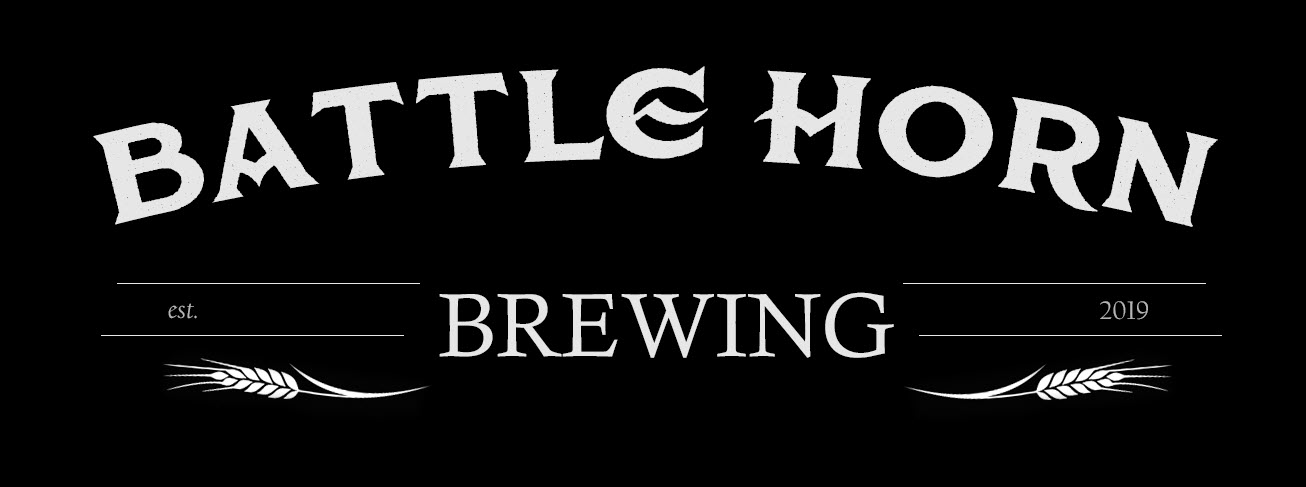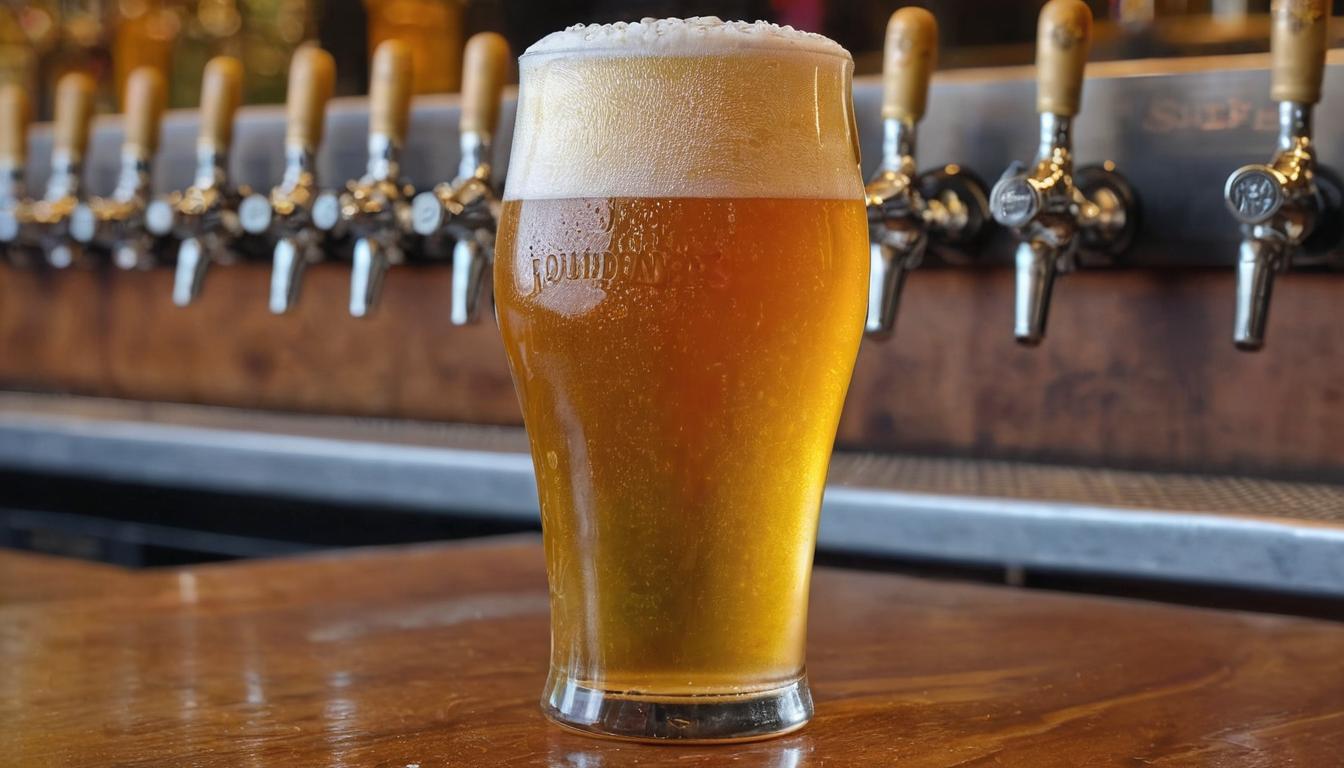
Craft beer often feels like a personal journey, where each sip tells a tale of passion and creativity. This contrasts sharply with commercial beers, which offer consistent but sometimes predictable flavors designed for mass appeal. While many appreciate this reliability, others long for the nuance found in the diverse world of craft brewing.
We’ve spent countless hours researching brewers’ practices, tasting different beers, and examining the science behind it all to bring you an in-depth look at what truly sets these two worlds apart. Interestingly, while craft beer is celebrated for its distinctiveness, there are fascinating overlaps in brewing techniques that blur the lines between craft and commercial beers more than one might expect. Let’s explore these differences and similarities to help you make knowledgeable choices whether buying your favorite beer or perfecting your homebrew recipe.
The key differences lie in production techniques, flavor profiles, and accessibility. Craft beers are typically produced by small, independent breweries, offering unique flavors and higher alcohol content, while commercial beers are mass-produced with traditional light-bodied tastes and wider availability. Ultimately, it comes down to personal preference when choosing between the two.
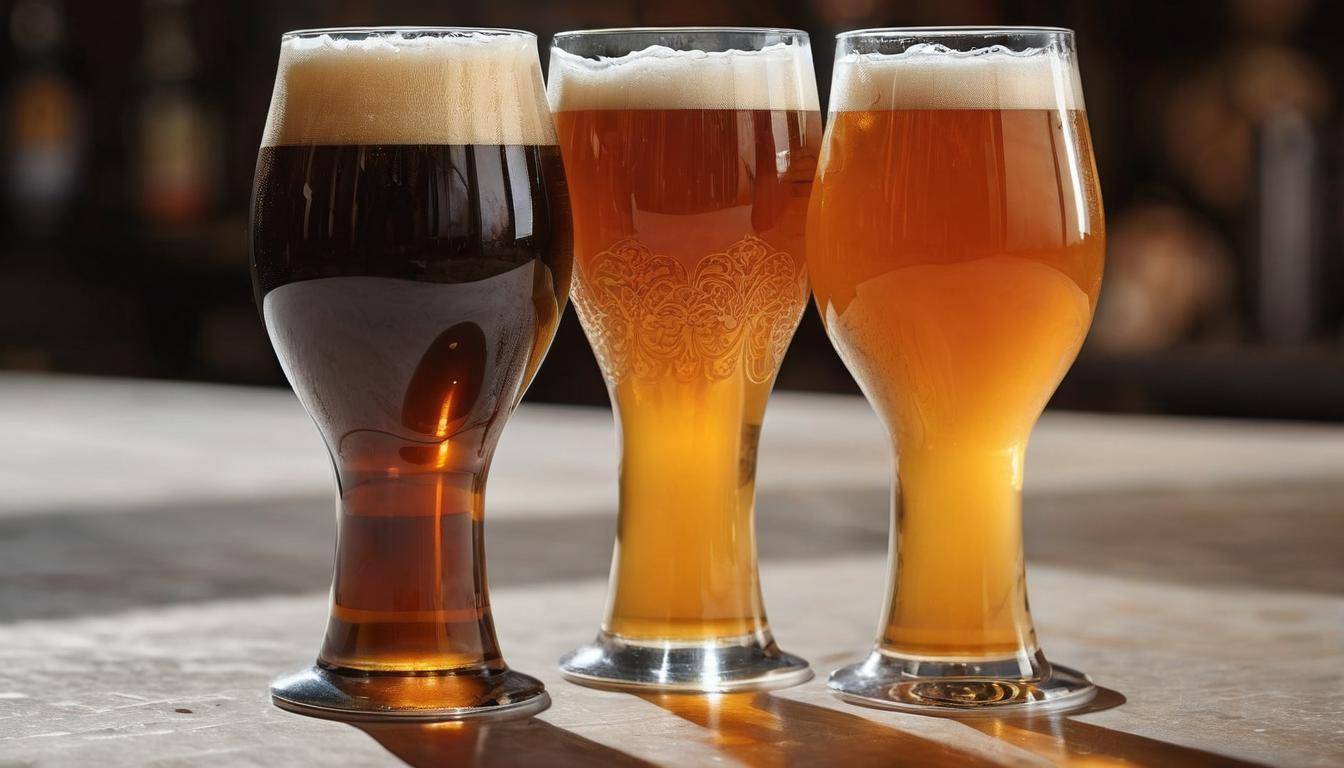
Craft vs commercial beers
Craft Beer vs Commercial Beer: Defining Both
Craft beer and commercial beer represent two distinct categories, each with its unique set of characteristics. Craft beer is often synonymous with small, independent breweries prioritizing quality, flavor, and innovation. The focus is on brewing distinctive recipes rather than mass production, resulting in a wide variety of unique flavors and styles that cater to diverse consumer preferences.
The Brewers Association defines craft brewers as those who produce fewer than 6 million barrels annually, emphasizing traditional brewing methods and high-quality ingredients. These breweries are driven by a passion for creating beers that offer depth of flavor and a rich sensory experience. They constantly experiment with innovative ingredients and brewing techniques, pushing the boundaries of traditional beer-making to deliver exciting new products to consumers.
For instance, craft breweries often utilize locally sourced hops and grains, as well as novel additions like fruits, spices, and experimental yeast strains to create one-of-a-kind brews. This dedication to artisanal craftsmanship results in beers with complex flavors, distinct aromas, and a higher alcohol by volume (ABV), offering an elevated drinking experience for enthusiasts seeking something beyond conventional options.
On the other hand, commercial beer is primarily associated with large-scale breweries such as Anheuser-Busch InBev, Heineken, or Molson Coors Beverage Company. These industry giants prioritize mass production techniques utilizing highly automated processes and standardized recipes to ensure consistency across their product lines.
The overriding goal for commercial breweries is to meet global demand by producing vast quantities of beer efficiently and economically. This often involves using cost-effective ingredients and streamlined brewing methods to ensure a light-bodied taste that appeals to a broad consumer base.
While craft beer shines in its diversity of flavors and experimentation, commercial beer aims for uniformity—the ability to consistently replicate a specific taste profile across large volumes. As a result, the market is flooded with widely available commercial beers that maintain a traditional light-bodied taste, making them accessible choices for many consumers.
Understanding these fundamental differences lays the groundwork for further exploration into the nuanced aspects of flavor profiles and brewing processes within the craft beer and commercial beer sectors.
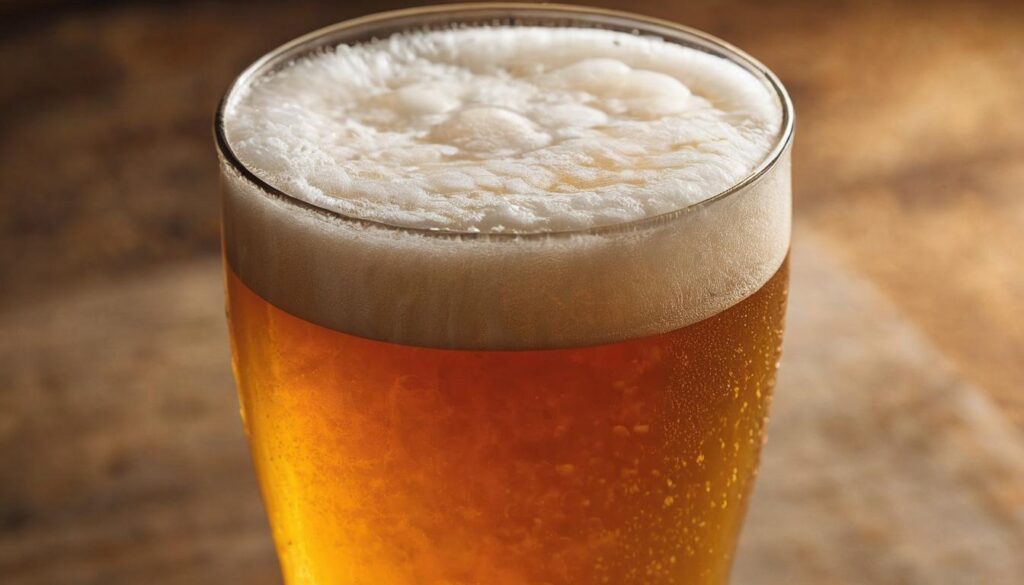
Brewing Methods and Techniques
Craft breweries operate like artisanal workshops, often adhering to traditional brewing methods that have stood the test of time. They favor small-batch brewing, allowing for more experimentation and attention to detail. This method gives them a significant edge over commercial breweries, as it allows them to concoct unique flavor profiles and intense aromas.
Furthermore, craft brewers pride themselves on open fermentation, a traditional method involving the exposure of fermenting beer to the surrounding air without any containment. This technique results in unique flavors from wild yeast strains present in the environment. On top of that, craft breweries often utilize barrel aging to infuse their beer with subtle nuances acquired from wooden barrels like oak or bourbon casks. This imparts a distinctive character to the beer, drawing out rich flavors and complexities that wouldn’t be possible through other methods.
Differences in Craft Beer Brewing Techniques
| Technique | Description |
|---|---|
| Small-batch brewing | Allows for greater experimentation and attention to detail |
| Open fermentation | Utilizes wild yeast strains for unique flavors |
| Barrel aging | Infuses beer with rich flavors from wooden barrels |
On the flip side, commercial breweries have embraced technological advancements in brewing to streamline production and maintain consistency across large volumes of beer. Techniques such as continuous fermentation optimize efficiency by ensuring a constant flow of fermented liquid. Additionally, advanced filtration systems are employed to clarify and stabilize the beer, providing a clear appearance and longer shelf life.
These technologies enable commercial brewers to produce beer quickly and with minimal variation between batches, catering to the demands of mass consumption. However, this emphasis on efficiency sometimes comes at the cost of flavor complexity.
To further enhance aroma and flavor, craft brewers frequently employ an innovative technique called dry-hopping, where hops are added later in the brewing process. This process imparts a vibrant hop aroma and enhances the overall flavor profile of the beer.
At its crux, while craft brewers prioritize time-honored techniques that emphasize creativity and diversity, commercial breweries leverage cutting-edge technology for large-scale production efficiency at the potential expense of intricate flavor profiles.
Understanding these diverse brewing methods sheds light on how each approach contributes significantly to the final products – craft beers celebrated for their depth of flavors and aromas versus commercial beers known for their consistent mass appeal.
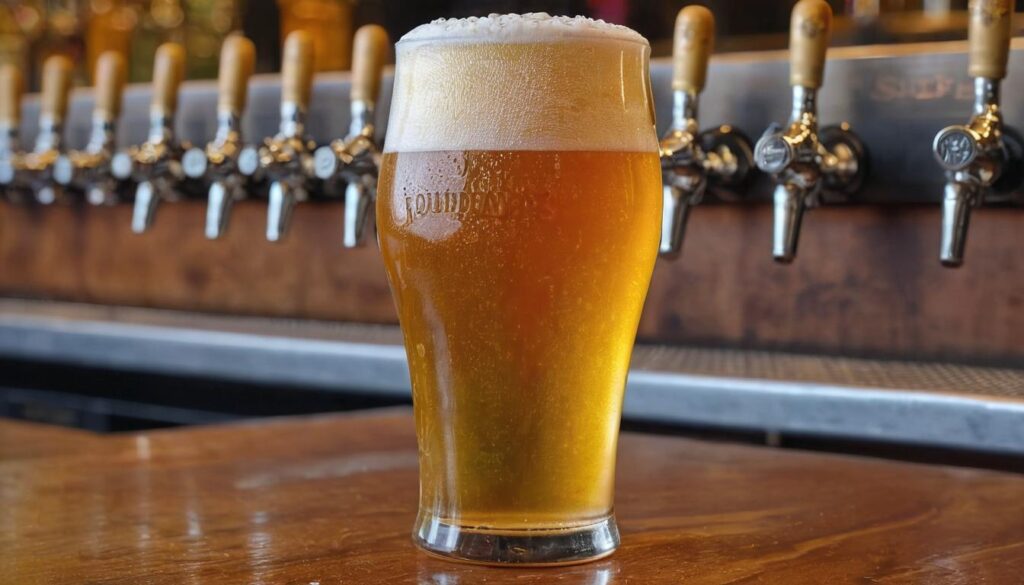
Taste and Quality Comparison
When it comes to flavor, craft beers are like an adventure for your taste buds. Craft breweries pour a lot of creativity into their beer recipes, often using unique ingredients like fruits, spices, and even coffee to give each brew its own distinctive flavor. Take Battle Horn Brewing, for example: their flagship IPA offers a complex blend of citrus and pine notes, balanced with a subtle sweetness from the malt. These flavors are carefully crafted to create a rich and layered taste experience that keeps you coming back for more.
Craft beers are all about variety and complexity, pushing the boundaries of traditional beer flavors and creating new taste experiences. From fruity and tropical to spicy and bold, there’s a wide range of flavor profiles to explore within the craft beer world. For instance, a craft brewery might use different types of hops to give their beer unique floral or earthy notes or add specialty malts for caramel or chocolate undertones.
On the other hand, commercial beers aim for a more approachable, consistent taste that caters to a broad audience. Beverages from big-name brands like Budweiser or Coors prioritize drinkability over complexity, resulting in a lighter and milder flavor profile. They’re designed to appeal to a wide range of consumers who prefer a traditional light-bodied taste.
It’s similar to comparing an intricate gourmet dish with a classic comfort food favorite—the former offers diverse and unexpected flavors while the latter provides a familiar and easy-going taste. Craft beers are like the exciting fusion cuisine at an upscale restaurant, combining unexpected ingredients and flavors for a one-of-a-kind dining experience. Commercial beers, on the other hand, are more like a reliable home-cooked meal—a comfortable choice with familiar flavors that can be enjoyed by many.
So, in summary, while craft beers boast diverse and robust flavors infused with unique ingredients, commercial beers lean towards a lighter, more consistent taste to appeal to a broader audience.
As we continue our journey through the world of brewing, let’s now turn our attention to the fascinating influence of breweries and styles on the delightful tapestry of beer offerings.
Influence of Breweries and Styles
Craft breweries are more than just beer producers; they often serve as cultural epicenters within their communities. For instance, at Battle Horn Brewing, we put a strong emphasis on fostering community connections by regularly hosting local events like live music performances, food truck gatherings, and educational brewing workshops. By doing so, we not only produce beer – we enhance the local social fabric and create an inclusive space for diverse groups of people to converge, share experiences, and enjoy our flavorful offerings.
The strong sense of identity that craft breweries cultivate is palpable. These establishments are not just places to grab a drink; they become ingrained in the fabric of the community, often reflecting the personality, ethos, and values of the locals they serve. The diverse range of beer styles offered by craft breweries significantly contributes to this sense of identity. From rich stouts and robust porters to tangy sours and rustic farmhouse ales, craft breweries encourage consumers to venture into uncharted flavor territories.
For example, imagine walking into a local craft brewery. The air buzzes with excitement as you’re greeted by a vibrant array of unique beer options, each bearing a distinct character that tells a story about the brewery’s passion for innovation and creativity. This assortment often reflects the brewers’ dedication to pushing boundaries and delivering a sensorial experience that transcends conventional beer drinking.
In contrast, commercial breweries primarily center their efforts on creating beers with mass appeal. While they may occasionally venture into offering a broader range of styles during special releases or seasonal lines, their primary focus remains on producing traditional favorites like lagers and pilsners. This standardized approach allows commercial breweries to cater to a broader consumer base seeking familiar flavors with consistent quality.
The evolving landscape of craft breweries introduces a dynamic dimension to the beer industry, one that intertwines brewing with local culture and fosters camaraderie among enthusiasts. Craft beer’s embrace of diversity in styles not only encourages exploration but also amplifies the narratives woven into each pint, celebrating the artistry, heritage, and community-centric essence of this beverage.
With an understanding of the intricate interplay between craft beer and community culture, let’s now dive into the market availability and popularity of these distinct brews.
Market Availability and Popularity

When it comes to availability, the disparity between commercial and craft beers is striking. Commercial beers like Corona and Miller Lite have an almost universal presence, found in nearly every bar, restaurant, and supermarket around the world. Their extensive production scales and well-established distribution networks ensure their wide accessibility. Conversely, craft beers, though gaining popularity, are more localized in distribution due to their smaller production scales and regional focus.
Craft beer’s rise in popularity over the past decade has been remarkable. Despite their more limited distribution, craft beers have garnered a significant market share, accounting for about 25% of the U.S. beer market by sales revenue as of 2022. This demonstrates a substantial shift in consumer preference toward unique, artisanal brews that offer distinct flavors and experiences. In fact, breweries like Battle Horn Brewing have experienced this surge firsthand, witnessing a steady increase in demand and seizing the opportunity to expand their reach beyond local markets into neighboring states.
As craft beers continue to redefine the beer landscape, their popularity is further amplified by the sense of community they foster. Local breweries often become beloved gathering spots for enthusiasts who appreciate the artistry and dedication that goes into each brew.
Battle Horn Brewing has become a hub for beer aficionados in its region, attracting patrons who seek out not just a drink but an experience—a connection rooted in craftsmanship and passion. This local appeal contributes to the allure of craft beer and underscores why these establishments hold such significance within their communities.
The increasing traction of craft beer signifies a significant shift in consumer preferences toward supporting local businesses and savoring distinctive, handcrafted creations. While commercial beers maintain broad accessibility and familiarity, craft beers offer a personalized touch that resonates with those who value authenticity and flavor diversity.
In our exploration of market availability and popularity, it’s evident that both commercial and craft beers offer distinct experiences that cater to varied consumer preferences.
Price and Consumer Choices
When it comes to choosing between craft beers and commercial beers, price is definitely a factor to consider. Craft beers often come at a higher price point, and this can be due to several reasons. First, craft breweries produce their beer on a smaller scale compared to commercial breweries. This means that each batch of craft beer requires more time and attention from the brewmaster, resulting in higher production costs.
Moreover, the ingredients used in craft beers are often of premium quality, sourced from specific regions and handpicked for their flavor profiles, which further increases the cost of production. For instance, Battle Horn Brewing’s exclusive IPAs are brewed using carefully selected hops and malt, contributing to the unique taste and character of the beer but also adding to the overall cost. Additionally, craft brewers often employ specialized brewing techniques and invest in innovative equipment to experiment with flavors and develop unique brews, which can drive up the cost even further.
Conversely, commercial beers are mass-produced on a larger scale, allowing them to benefit from substantial economies of scale. Their streamlined production processes enable them to produce larger quantities more efficiently and at a lower cost per unit. As a result, commercial beers are generally more affordable than their craft counterparts, making them accessible to a wider audience in terms of pricing.
Consumers often gravitate towards commercial beers because of their budget-friendly prices and consistent flavor profiles. Many people have their go-to commercial beer that they can rely on for a familiar taste every time they purchase it. On the other hand, those who seek variety, quality, and unique tasting experiences are willing to trade off affordability for the elevated experience offered by craft beers. This segment of beer enthusiasts values being part of an artisanal process that emphasizes creativity, innovation, and taste exploration.
While a six-pack of Coors may offer familiar and predictable flavors at an economical price point, a six-pack of Battle Horn Brewing’s exclusive IPAs may come at a significantly higher cost. The higher price tag attached to craft beers is often justified by the superior quality, intricate flavors, and the story behind each brew. It’s not just about drinking a beverage; it’s about savoring an experience crafted with passion and expertise.
Although commercial beers present an attractive price advantage and consistent flavor profiles, craft beers appeal to consumers seeking distinctiveness, quality ingredients, and a more immersive tasting journey. The decision ultimately comes down to individual preferences and priorities – whether it’s favoring accessibility or embracing exploration and sophistication within the realm of beer consumption.
